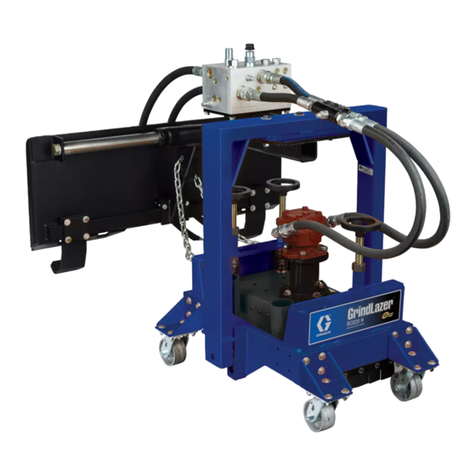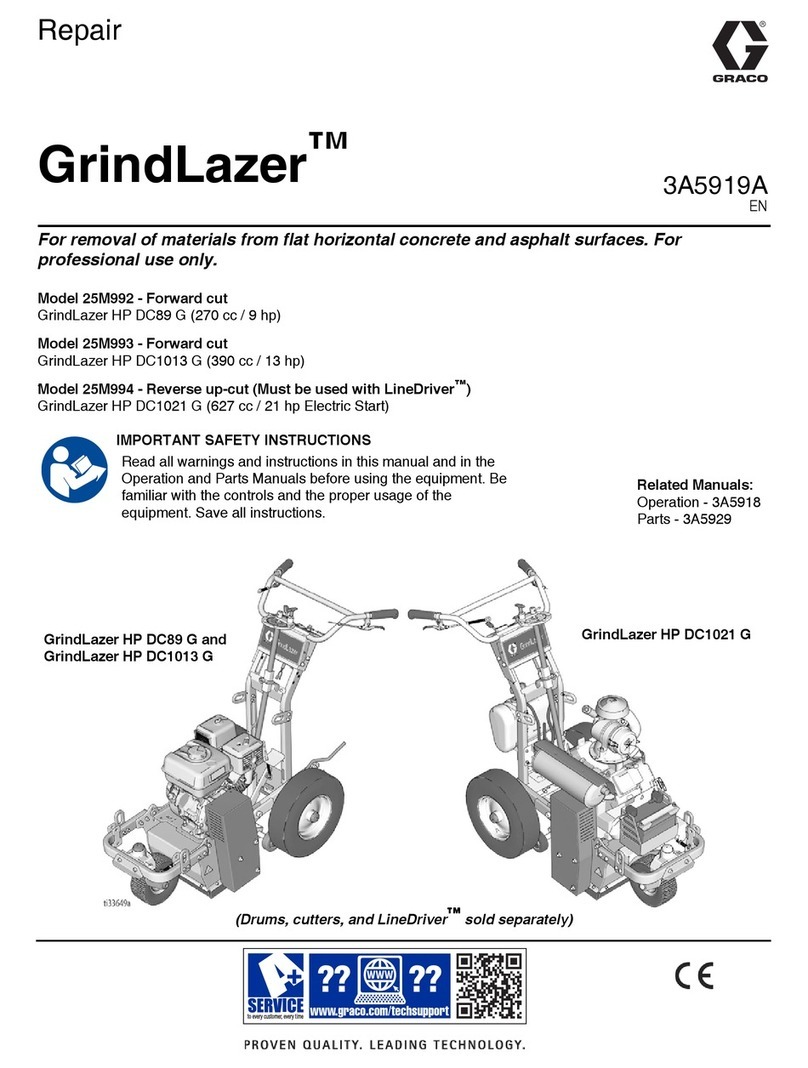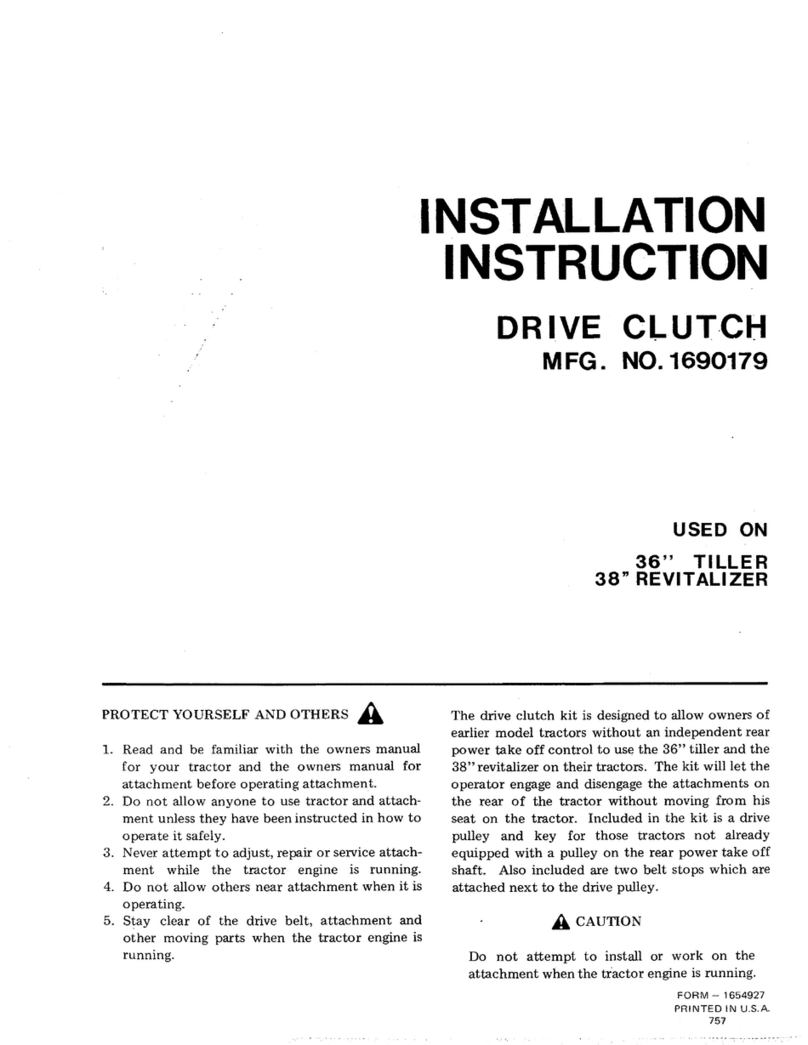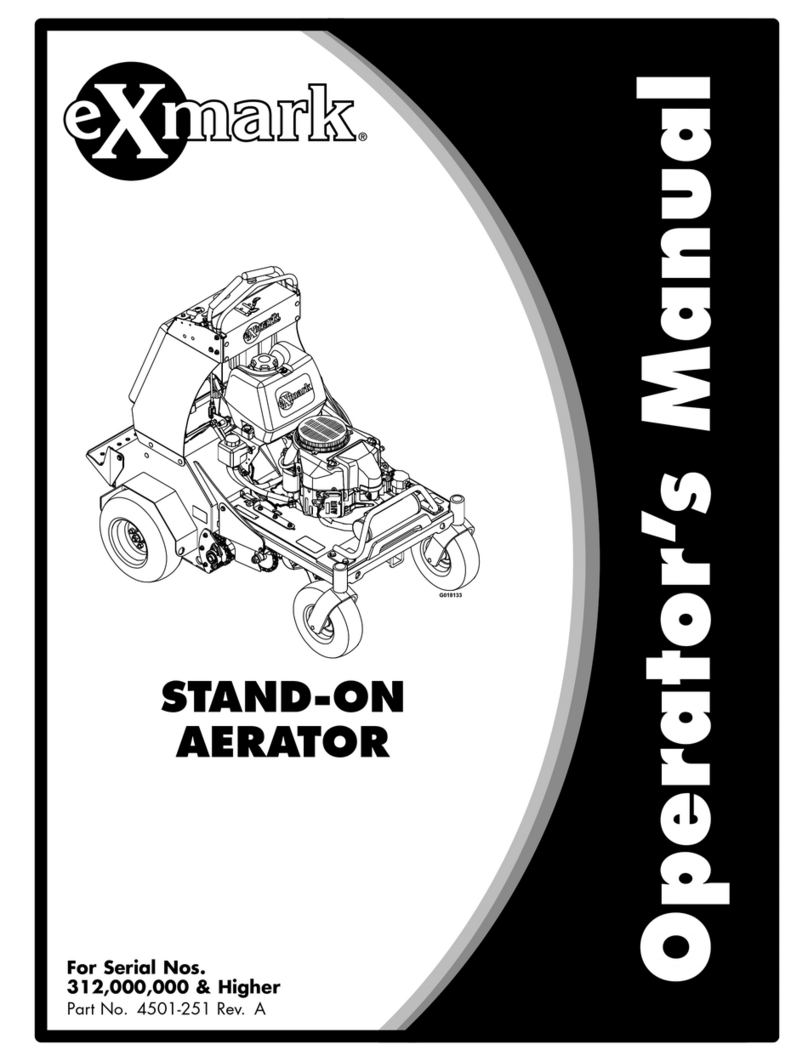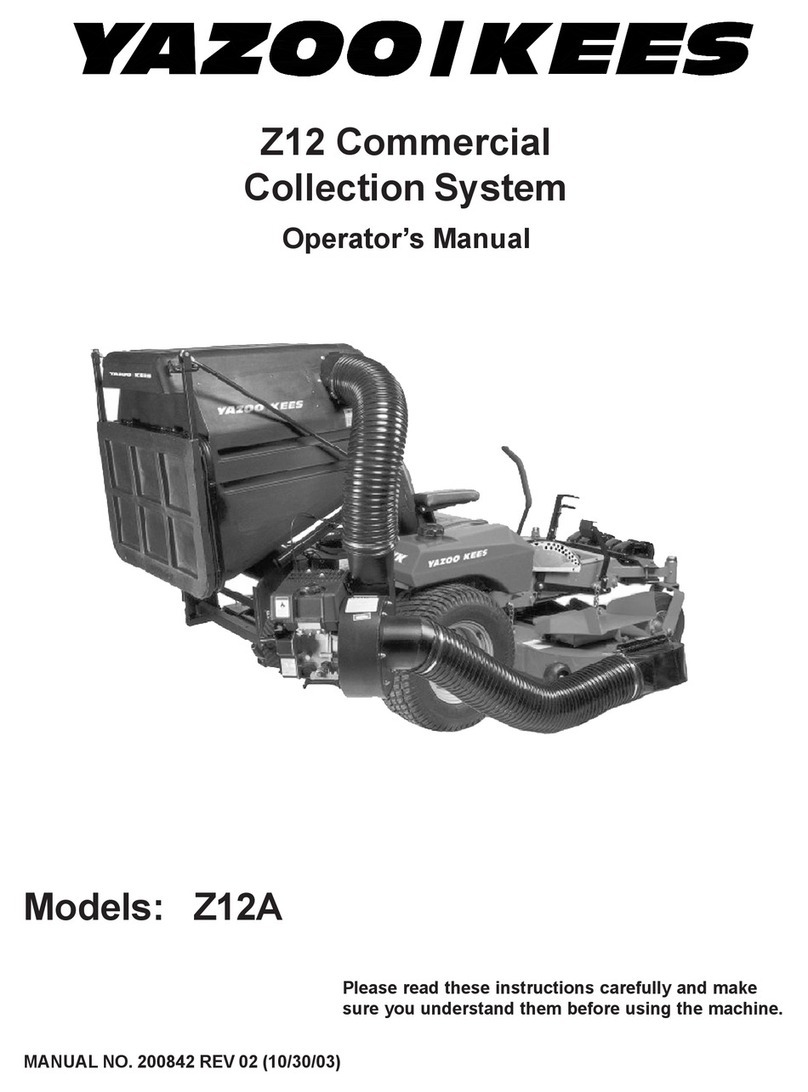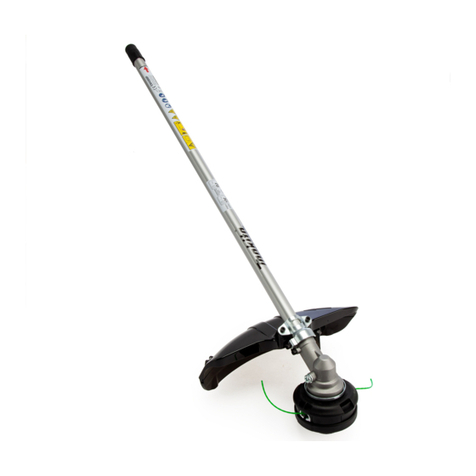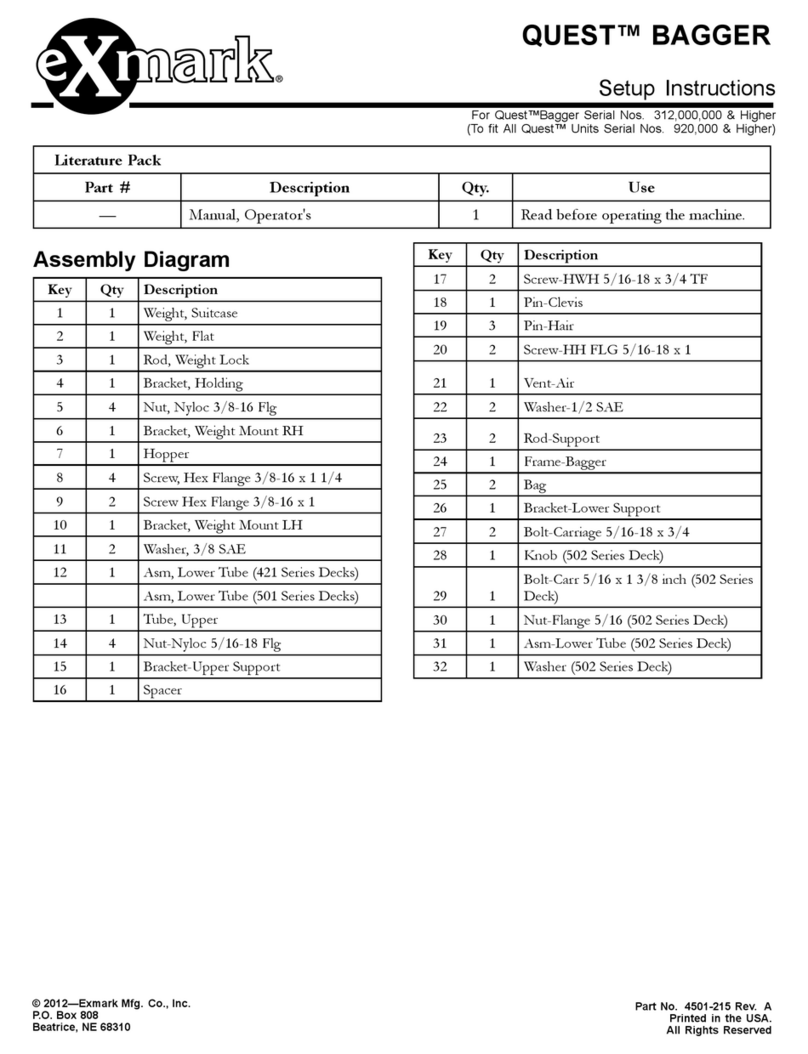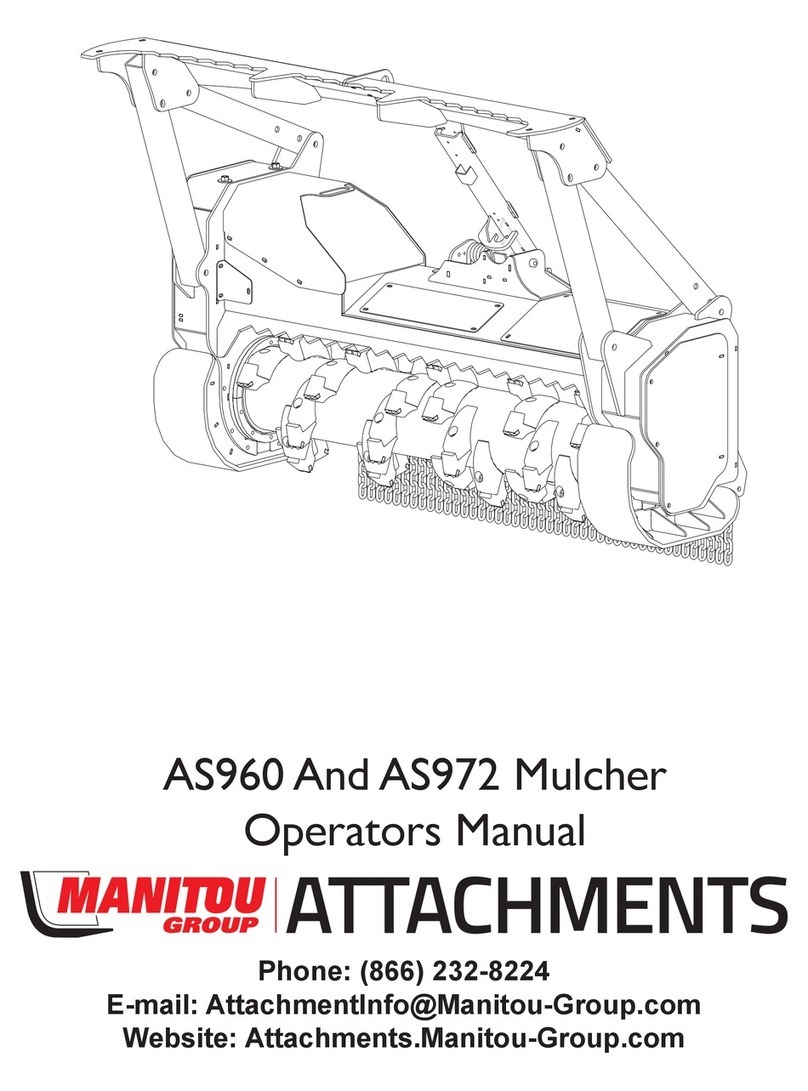Graco SPRAY PACK Instruction Manual

OPERATING INSTRUCTION MANUAL
BEFORE USE – PLEASE READ THE MAIN MANUAL AND SAFETY INSTRUCTIONS.
Please retain for future reference.
MANUAL DE INSTRUCCIONES
ANTES DE UTILIZARLA - POR FAVOR LEA EL MANUAL PRINCIPAL Y LAS
INSTRUCCIONES DE SEGURIDAD.
Guárdelo para futuras consultas.
Graco and the Graco logo are registered trademarks of Graco, Minnesota, Inc
Graco y el logotipo de Graco son marcas y emblemas registrados de Graco, Minnesota, Inc
US
SPRAY PACK

2
EXPLODED PARTS VIEW
1
D
56
8
A
B3
4
2
10
7E
D
C6
4
9
Fig.1
Fig.2 Fig.3 Fig.4

Which container should I use? 1.3 Gallon Spray Pack 1 t Container
For ceiling No Yes
For wall or floor Yes Yes
With water based product Yes Yes
With solvent based product Not recommended as a lot of thinners would be required for the clean up Yes
Fluidity of the paint Will require a thinner dilution than with the 1 Qt container Yes
Primer Not recommended Yes
Smooth masonry paints Not recommended Yes
3
Volume of paint 10% Dilution 15% Dilution 20% Dilution
1/4 Gallon (1 Qt) 3.2 fl oz 4.8 fl oz 6.4 fl oz
1/2 Gallon (2 Qt) 6.4 fl oz 9.6 fl oz 12.8 fl oz
1 Gallon (4 Qt) 12.8 fl oz 19.2 fl oz 25.6 fl oz
uestions - Call Toll Free: 888-944-HVLP
Spray Pack
Important Information
This Spray Pack should only be used with the Graco VLP Spray Station 2900 or 3900. Using with another VLP unit may affect the Spray Packʼs performance. This does
not affect your statutory rights.
Tip: As per the use of the 1 Qt container, low temperatures can make paint thicker and we therefore recommend spraying in temperatures at a minimum of 59˚F.
Ensure that your spray material/paint is also at room temperature before you start any spraying job.
Dilution – (calculating the right dilution is required if you are using paint in the Spray Pack).
Dip the viscosity cup into the material and fill up. Check the guide below for the viscosity rating for your machines. Time how long it takes for the paint to empty from the
viscosity cup, stop timing when the continuous flow of material from the bottom of the cup breaks (Fig.4). If the paint requires thinning, start with a 10% dilution of the paint.
To do this, part fill a container with one quart of paint. The viscosity cup supplied with the unit holds 10% of a quart, block the hole in the viscosity cup and fill up with the
required thinner. Add the thinner to the paint and stir, measure the viscosity. If the paint requires further thinning, dilute the paint by another 5% (5% will be equal to half a
viscosity cup) with the required thinner and measure the viscosity, if the paint is not at its recommended viscosity, repeat the above step.
The Spray Station 3900 has a viscosity rating of 180 seconds. If the paint has emptied the viscosity cup in less than 180 seconds then you will not need to thin your
paint or material. If it is above this then thinning will be required.
The Spray Pack has a viscosity rating of 110 seconds. If the paint has emptied the viscosity cup in less than 110 seconds then you will not need to thin your paint or
material. If it is above this then thinning will be required.
The above ratings are a guide, dependent on paint formulation further dilution may be required in increments of 5%.
1. Open the spray material container and mix the spray material for 1 minute with a paint stirrer and drill.
2. Check viscosity of material.
3. Add 10% water to dilute, mix again with the stirrer and drill.
4. Pour some of the mixture into the spray pack and try using it. If you are not happy with the finish, add 5% more. With the Spray Pack paint can be diluted up to
20% to ensure that it sprays with a good finish.
Dilution Guide using water to dilute paint
Setting up the Spray Pack.
Your Spray Pack is supplied with the following items:
No. Description Part Code
1. Lid L0223
2. Spray Pack Container V0365*
3. Straps L1628
4. 4.6ft (Short) Clear Tube L1597#
5. Duck Bill Valve L1723
No. Description Part Code
6. 13ft (Long) Clear Tube L0894#
7. O-ring L1621
8. Lid Seal L1775
9. Tube Bung L1223
10. Viscosity Cup SG243
Unit Set Up - see diagrams on page 2
1. Take spray gun out of box packaging.
2. Unscrew the paint container from the spray gun and remove. Place the paint container back in the box for future use without the Spray Pack.
3. Remove the pick-up tube from the spray gun by carefully pulling out and put it back in the box with the paint container for future use.
4. Check that the white spray gun gasket is firmly in place in the gun (Fig.1 A).
5. Locate the 4.6’ (short) clear tube (Fig.1-4). Remove the bung (9) from one end (Fig.3); thread this end of the tube through the adaptor plate (1-B) (See Fig.1.).
6. Firmly push the tube onto the male spigot of the gun (Fig.1).
7. Locate the male spigot on the adaptor plate (Fig.1-B), inside the hole on the underside of the gun and then screw the adaptor plate into the gun.
8. Connect black air hose into the back of the spray gun by pushing and twisting firmly into place (Fig.1).
9. The gun is now set up.
10. Fit hose adaptor (Fig.2-C) facing upwards, into the Spray Station unit. Fitting the adaptor with the connection tube facing upwards will make it easier to attach the
other hoses (Fig.2).
11. Attach black air hose to the adaptor (Fig.2).
12. Attach the 13’ (long) clear tube (Fig.1-6) to the adaptor (Fig.2-C).
13. Attach hose clip (Fig.2-D) to the 13’ (long) clear tube and then clip along the air hose, spacing each clip approx. 12-15 inches apart.
14. The unit is now set up ready for use with the Spray Pack.
Tip: 1 viscosity cup full of water added to 1 Qt of paint/ material will give you approximately a 10% dilution.
* Cannot be ordered as a spare
# To order this, order part no. L1615

4
uestions - Call Toll Free: 888-944-HVLP
PROBLEM SOLUTION
Q: Spray material does not reach spray gun when
trigger is activated.
1. Check the dilution of your paint and if too thick, dilute more.
2. Check air hose and tubes are connected properly. The air supply from Spray Station is not reaching Spray Pack
container.
3. Check that the Spray Pack Container lid is sealed.
4. Check if spray gun fluid tip is blocked and fluid needle is free to move. Check spray gun manual on how to
clean.
5. Level of spray material in container is too low & needs to be filled.
Q: Painting up high = less paint. Ensure the straps are tight on Spray Pack and is positioned high on the back (Fig.1-3).
Q: Paint leaks down air tube. Check the duck bill valve is securely fitted inside the Spray Pack (Fig.1-5).
Q: Paint leaks around paint tube/connection
point.
Check o-ring is present and fitted properly on the paint spigot.
Check if o-ring is worn, if so, replace o-ring (Fig.1-7).
Spraying Set Up - see page 2, Fig.1 for reference.
1. Take Spray Pack out of box. Check that the o-ring (Fig.1-7) is in place and attach the spray gun and 4.6’ (short) clear tube (Fig.1-4) using the quick connect clip
(Fig.1-E).
2. Try on the Spray Pack (before filling with paint) to check for fit and comfort. Adjust straps (Fig.1-3) as necessary to ensure that the Spray Pack sits high on the back.
3. Before adding paint/ material to the Spray Pack, strain old or lumpy paint to avoid blockages. In a suitable container dilute the paint or spray material to the right
viscosity, using the dilution guide in this manual and the viscosity cup that was supplied with your Spray Station unit.
4. Stir paint or material thoroughly for approximately 1 minute. This is very important for good operation of the sprayer. We
would recommend use of a paint stirrer with a drill and make sure paint is not less than 59˚F.
5. Pour your stirred spray material into the Spray Pack, no higher than the neck of the Spray Pack (see Fig.5).
6. Check the lid seal (Fig.1-8) in lid cap (Fig.1-1) and verify it is in place. Screw lid as tightly as possible to prevent any leaks.
7. Wet the end of the tube with warm water to attach the 13’ (long) clear tube to the top of the Spray Pack (Fig.1-6)
8. Take the black air hose and push firmly into the back of the spray gun and twist (Fig.1).
9. Put the Spray Pack on your back and tighten straps (WARNING: Spray Pack weighs approximately 15 lbs when full).
10. Ensure the Spray Pack is secure on your back and the straps are tightened. The Spray Pack should sit on your upper back area for optimum working spray height.
11. Turn on the Spray Station unit with the paint flow dial set fully upwards and the trigger pulled, hold the spray gun lower than the Spray Pack until the liquid reaches
the spray gun.
12. It is recommended that appropriate mask, gloves, goggles and overalls, should be worn while using spray equipment.
Cleaning Instructions - see page 2, Fig.1 for reference.
The Spray Pack must be thoroughly cleaned immediately after use. If the paint dries inside the Spray Pack then cleaning will become much more difficult and may render
the Spray Pack inoperable. This is not covered by the guarantee.
1. Turn off unit and remove plug from the power supply.
2. Disconnect the black air hose from the gun. Disconnect the 13’ (long) clear tube (Fig.1-6) from the top of the Spray Pack by pulling, it may require softening with hot
water to release, leaving the paint tube attached.
3. Take Spray Pack to the the sink/protected wash area for cleaning. It is recommended that you clean using warm soapy water, do not use boiling water.
4. Remove the Spray Pack lid (Fig.1-1) by unscrewing carefully and slowly to release the air pressure inside the Spray Pack.
5. Pour any leftover paint into a container so that it can be used in the future. Wipe the Spray Pack to remove as much spray material/paint as possible.
6. Pour a quantity of warm soapy water into the Spray Pack container.
7. Screw the lid back on. Shake the Spray Pack gently; repeat process until Spray Pack is clean.
8. Remove the duck bill valve (Fig.1-5) from inside the Spray Pack and wash to remove any paint. Dry and insert duck bill valve back inside the Spray Pack.
9. Add a final quantity of warm water into the Spray Pack, screw lid back on and re-attach air hose. Turn on the unit and with the spray gun paint flow dial set fully
upwards, pull the trigger, and spray through the gun to clean the 4.6’ (short) clear tube (Fig.1-4). This should take less than a minute to run clear. The spray should be
clear and free of paint. If not repeat this process again until the spray is clear.
10. Release the 4.6’ (short) clear tube (Fig.1-4) from the Spray Pack using the quick connect clip (Fig.1-E) by pushing the button inwards and pulling the tube away.
11. Dry the Spray Pack with towel and reassemble for storage for your next spraying job.
12. Follow cleaning instructions for your spray gun in your Spray Station manual.
Hints and Tips:
• Ensure the straps are tight on the Spray Pack and positioned high on the back for optimum function and comfort.
• It is important that the paint or spray material is at room temperature. Too cold and it will become difficult to spray and cause blockages.
• Low temperatures can make paint thicker and we therefore recommend spraying in air temperatures at a minimum of 59°F.
CAUTION!
• Do not disconnect the clear paint tubes from the spray gun or the Spray Pack when the pressure has not been released from the Spray Pack or if the Spray
Pack is full of paint.
• Beware that paint can accidently exit the spray gun when the turbine unit is switched off due to the pressure held in the Spray Pack.
• Please note that the Spray Pack can weigh up to 15 lbs when full, be careful when handling this unit.
Do not fill pass
this level
Fig.5
Your Spray Station has been tested prior to leaving the factory. For the first use we recommend you fill the quart cup with water, connect the hose to the turbine and gun,
and spray onto some scrap wood or cardboard. This will clear any small amount of dust that may have entered into the paint tube, and also help you familiarize yourself
with the gun controls. If the unit does not function or you cannot spray the water see our trouble shooting section, call our toll free helpline 888-944- VLP (4857) or visit
www.spray-station.com. If the unit does not function DO NOT PUT PAINT INTO T E GUN CONTAINER as in the event you have to return the product due to a
malfunction then the store will not take the Spray Station back. In the event there is a malfunction and paint has been used please call our helpline and we will rectify the
problem for you.

¿ ué envase debería utilizar? Mochila pulverizadora con capacidad para 5 galón Envase de 1 t
Para techos No Sí
Para pared o suelo Sí Sí
Con producto con base acuosa Sí Sí
Con producto con base de disolvente No recomendado, ya que se necesitarán muchos diluyentes para su limpieza Sí
Fluidez de la pintura Necesitará un disolvente más potente que con el envase de 1 litro Sí
Pintura base No recomendado Sí
Pintura para mampostería suave No recomendado Sí
5
Mochila pulverizadora
Información importante
Esta mochila pulverizadora solo debería utilizarse con la unidad de la estación pulverizadora Graco VLP de las series 2900, 3900. El uso de otra unidad VLP puede
afectar al rendimiento de la mochila pulverizadora. Esto no afecta a sus derechos legales.
Nota: Con respecto al uso del envase de 1 Qt, las bajas temperaturas pueden hacer que la pintura espese, por lo que se recomienda pulverizar a temperaturas mínimas
de 59ºF. Asegúrese de que su pintura/material para pulverizar también se encuentre a temperatura ambiente antes de empezar cualquier trabajo de pulverización.
Disolvente – cálculo del disolvente adecuado si utiliza pintura en la mochila pulverizadora.
Viscosidad es un término técnico utilizado para indicar si un líquido es poco o muy espeso. Es importante que la viscosidad de la pintura sea correcta para lograr que la
pintura se atomice correctamente y se vaporice bien, produciendo un acabado de buena calidad (Fig.4). Si su material es poco espeso, como el agua, se dice que su
viscosidad es baja, mientras que si es muy espeso como pintura interior de látex, se dice que su viscosidad es alta. La viscosidad se mide en segundos.
Siempre se debe probar la viscosidad (o espesor) de la pintura antes de vaporizarla, para ver si es necesario diluirla. Es importante que la viscosidad de la pintura sea
correcta para asegurarse de que la pintura se atomice correctamente y se vaporice de forma uniforme.
La Spray Stationva equipada con una taza de viscosidad. La taza de viscosidad le ayuda determinar el espesor de la pintura. Para probar la viscosidad de un líquido, sumerja
la copa de viscosidad en el material y llénela hasta el borde. Cronometre el tiempo que la pintura tarda en salir de la taza de viscosidad - pare cuando el flujo termine de
salir del fondo de la taza. Esto determinará si el material necesita diluirse antes de vaporizarse.
1. Abra el envase con el material a pulverizar y mézclelo durante 1 minuto con un mezclador de pintura con taladro.
2. Verificar la viscosidad de la pintura.
3. Añada un 10% de agua para diluir, mezcle de nuevo con el agitador y el taladro.
4. Vierta parte de la mezcla en la mochila pulverizadora e intente utilizarla. Si no está contento/a con el resultado, añada otro 5% más. Con la
mochila pulverizadora la pintura puede diluirse hasta un 20% para asegurarse de que se pulverice con un buen acabado.
Guía de dilución utilizando agua para diluir la pintura.
Preparación de la mochila pulverizadora
Su paquete pulverizador se facilita con los siguientes elementos:
Nº Descripción Código de las piezas
1. Tapa L0223
2. Envase de la mochila pulverizadora V0365*
3. Correas L1628
4. Tubo transparente (corto) de 4.6ft L1597#
5. Válvula de boca plana L1723
Nº Descripción Código de las piezas
6. Tubo transparente (largo) de 13ft L0894#
7. Junta tórica L1621
8. Sello de la tapa L1775
9. Tapón del tubo L1223
10. Depósito de viscosidad SG243
Montaje de la unidad
1. Para montarla saque la pistola pulverizadora de la caja de embalaje.
2. Quite el contenedor de pintura de la pistola pulverizadora desatornillando el contenedor de la pistola. Vuelva a poner el contenedor de pintura en la caja para su
uso futuro sin la mochila pulverizadora.
3. Saque el tubo de recogida tirando de él con cuidado y póngalo a un lado para usarlo con el contenedor de pintura de la caja en un futuro.
4. Compruebe que el sello redondo está firmemente colocado en la pistola (Fig.1-A).
5. Tome el tubo transparente de pintura (4) (el tubo corto), extraiga el tapón de un extremo (Fig.3-9); introduzca este extremo del tubo a través de la placa del
adaptador (B). (Consulte la Fig.1.)
6. Introduzca firmemente el tubo de pintura en la pistola.
7. Tomar el disco de conexión y hacer coincidir los conteras con los situados bajo la pistola y atornillar.
8. Conecte la manguera de aire negra en la parte posterior de la pistola pulverizadora introduciéndola y girándola hasta que quede en su lugar.
9. La pistola ya está preparada.
10. Coloque el adaptador de la manguera (Fig.1-C) hacia arriba en la unidad de la estación pulverizadora. Si coloca el adaptador con el tubo de conexión hacia arriba
se facilitará el ajuste de otras mangueras. (Según su unidad, consulte la Fig.2)
11. Acople la manguera de aire negra al adaptador (Fig.2).
12. Acople el tubo de aire transparente más largo (Fig.1-6) al adaptador. (Es el tubo transparente más largo de la caja.) (Fig.2-C)
13. Acople la abrazadera de la manguera (D) al tubo transparente largo y vaya colocándolas a lo largo de la manguera de aire, espaciando cada abrazadera unos 12-
15inch.
14. La unidad ya está preparada para su uso con la mochila pulverizadora.
Para preguntas y atención al cliente llamada gratuita: 888-944 HVLP
Volumen de pintura Disolución al 10% Disolución al 15% Disolución al 20%
1/4 Gallon (1 Qt) 3.2 fl oz 4.8 fl oz 6.4 fl oz
1/2 Gallon (2 Qt) 6.4 fl oz 9.6 fl oz 12.8 fl oz
1 Gallon (4 Qt) 12.8 fl oz 19.2 fl oz 25.6 fl oz
* No puede ser pedido como pieza de recambio.
# Para pedir este pieza, pida el numero L1615
Table of contents
Languages:
Other Graco Lawn And Garden Equipment manuals
Popular Lawn And Garden Equipment manuals by other brands
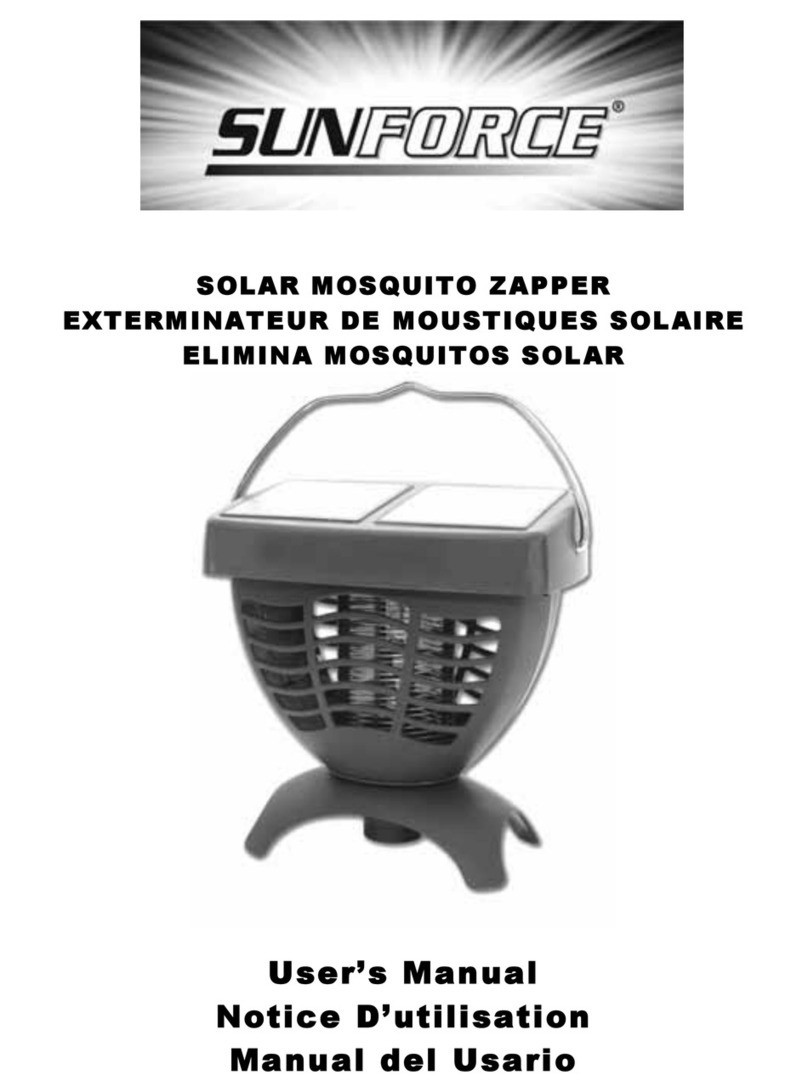
Sunforce
Sunforce SOLAR user manual
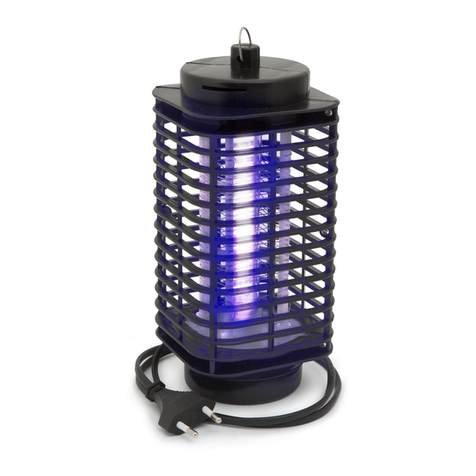
GARDEN OF EDEN
GARDEN OF EDEN 55627 user manual
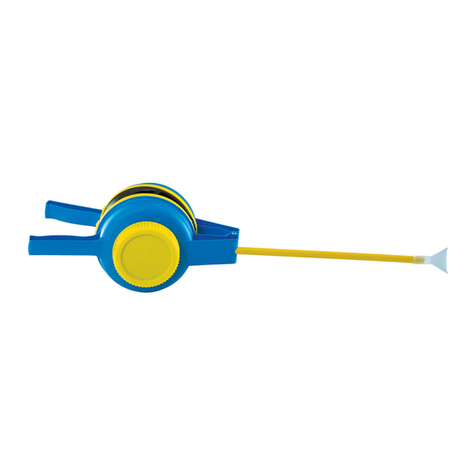
Goizper Group
Goizper Group MATABI POLMINOR instruction manual
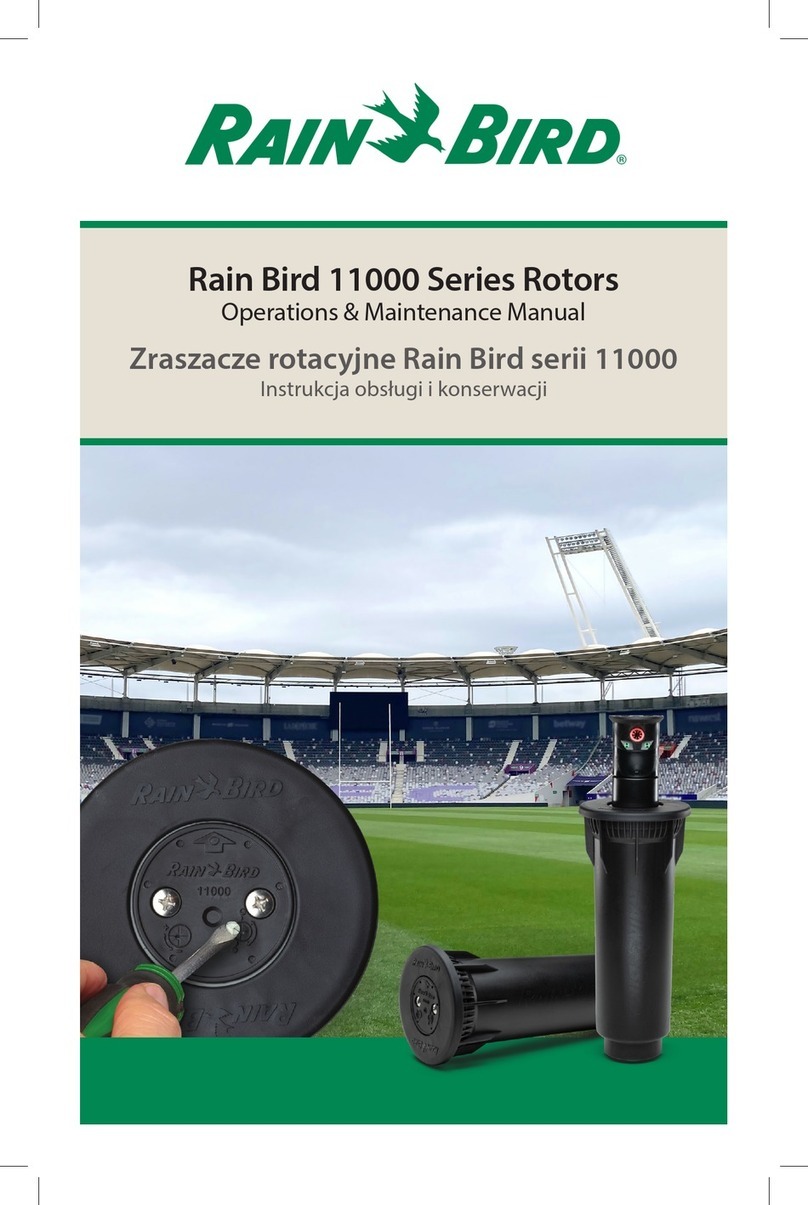
Rain Bird
Rain Bird 11000 Series Operation & maintenance manual
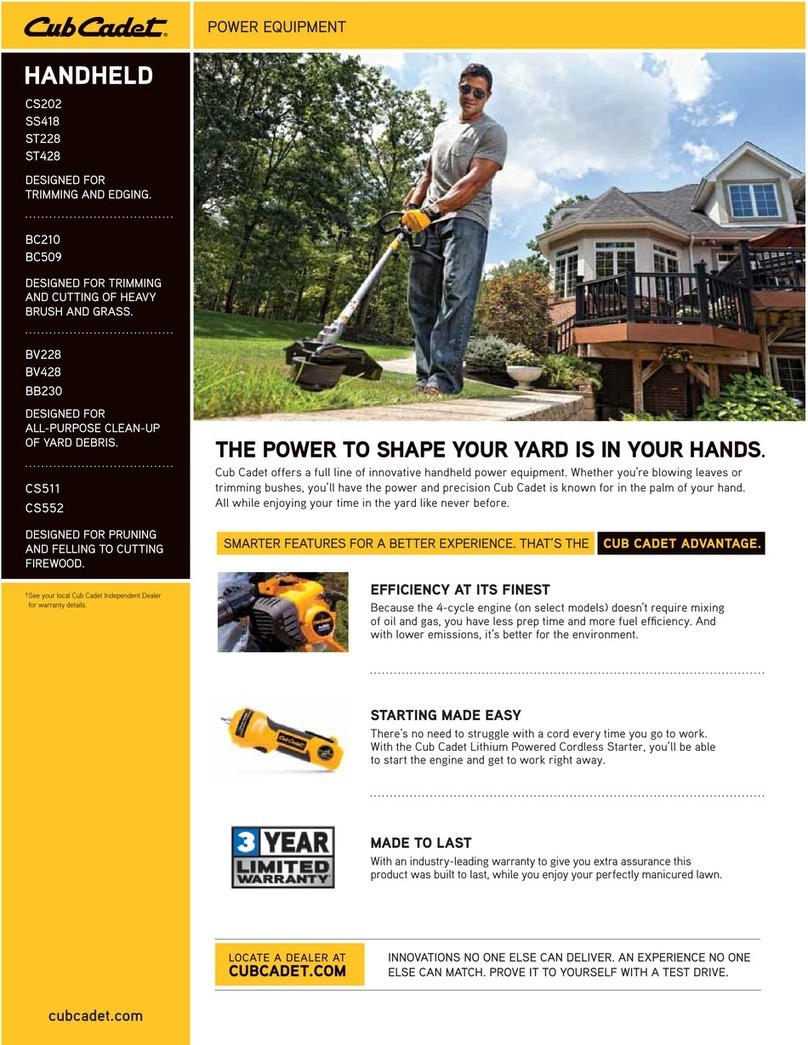
Cub Cadet
Cub Cadet BB 230 brochure
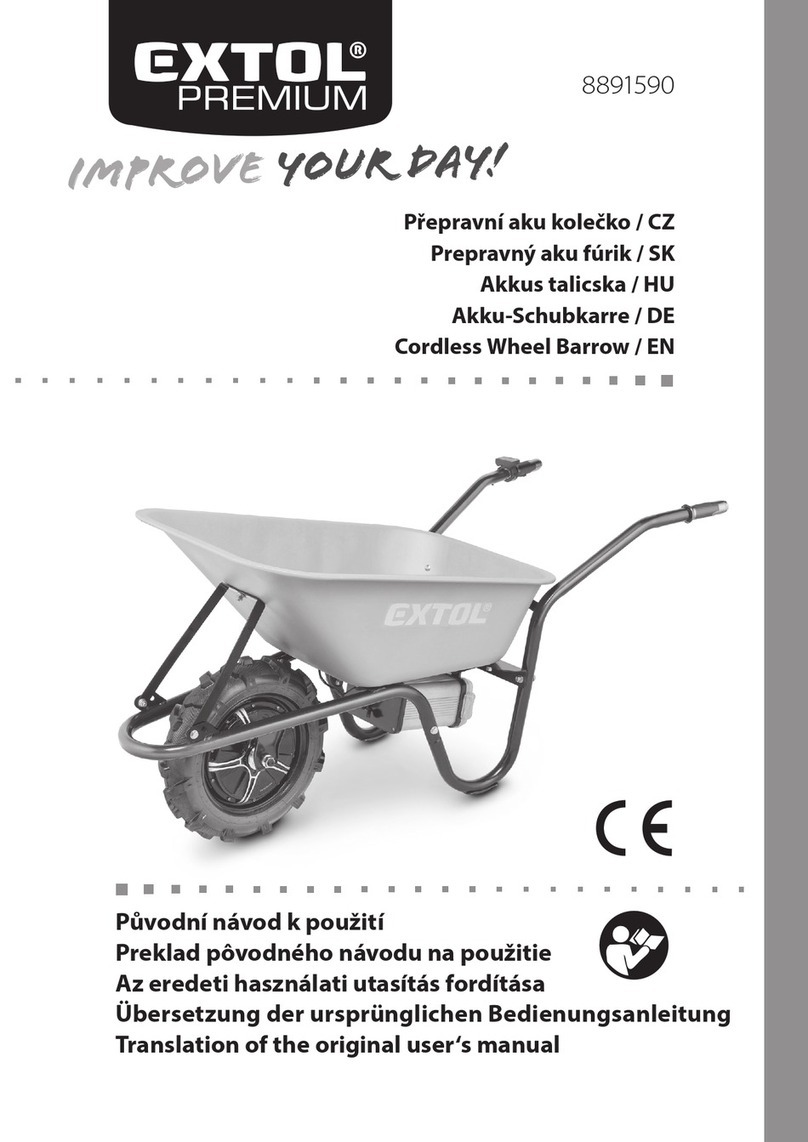
EXTOL PREMIUM
EXTOL PREMIUM 8891590 Translation of the original user manual
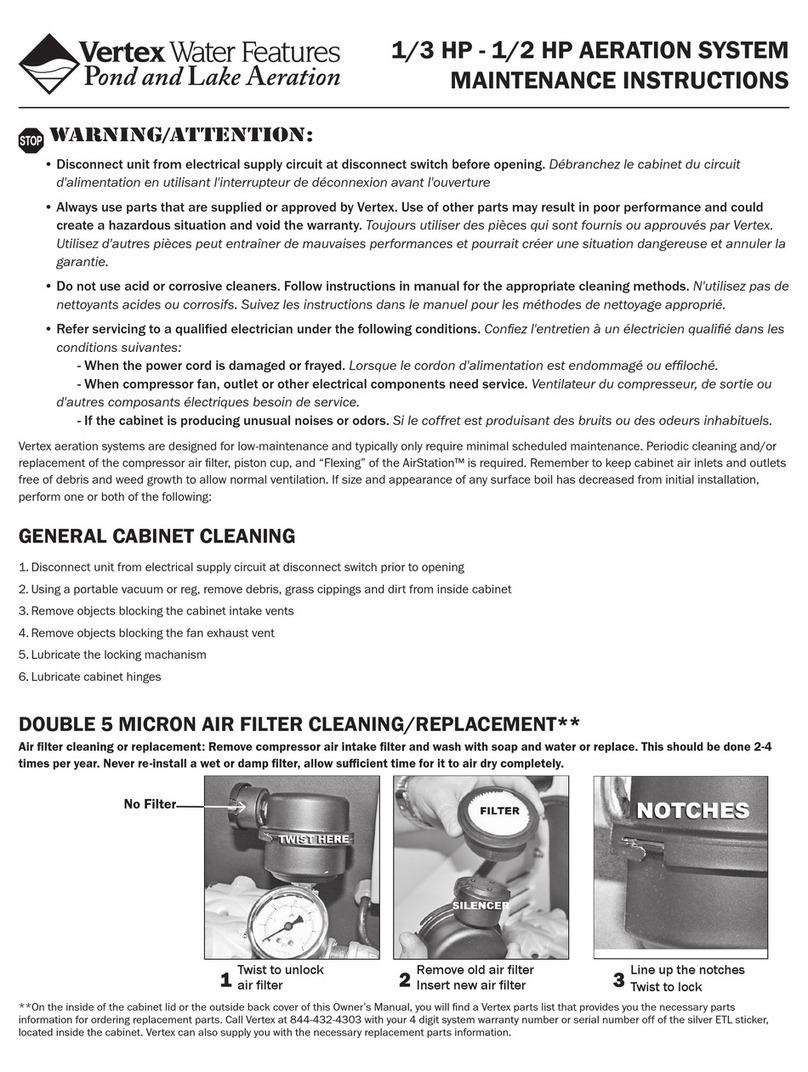
Vertex
Vertex 1/3 HP Maintenance instructions
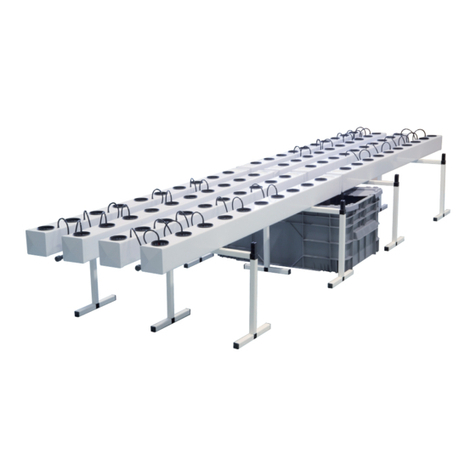
GHE
GHE AeroFlo 80 manual
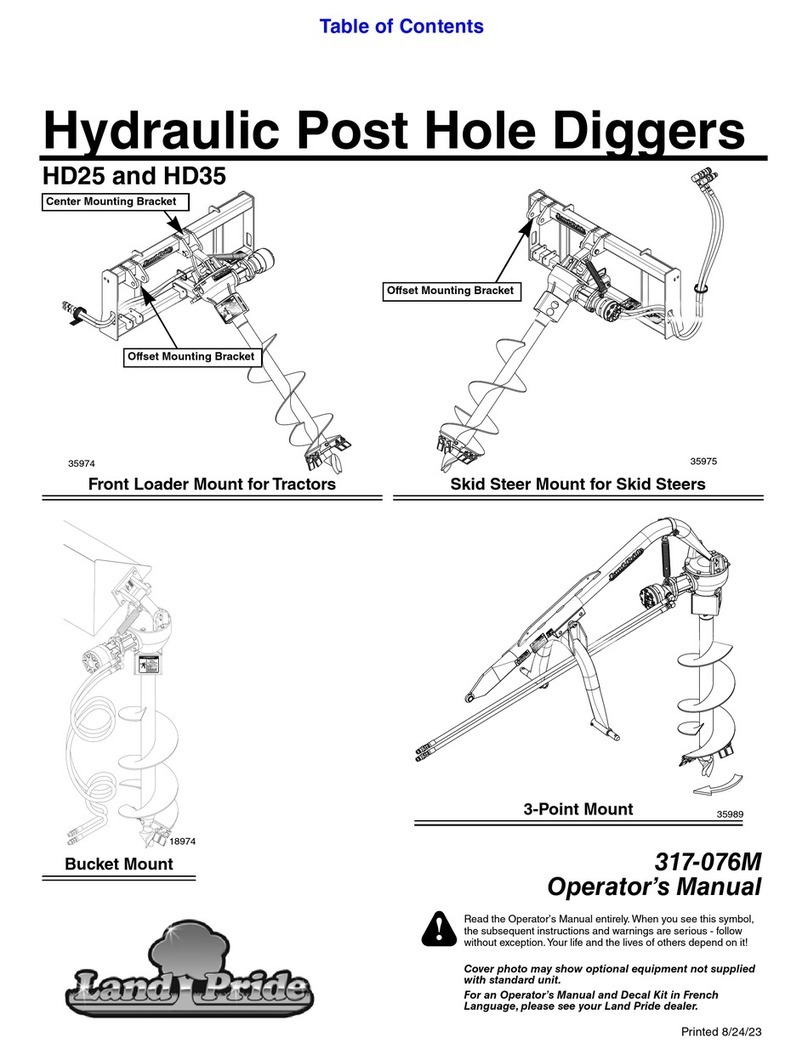
Land Pride
Land Pride Post Hole Diggers HD25 Operator's manual
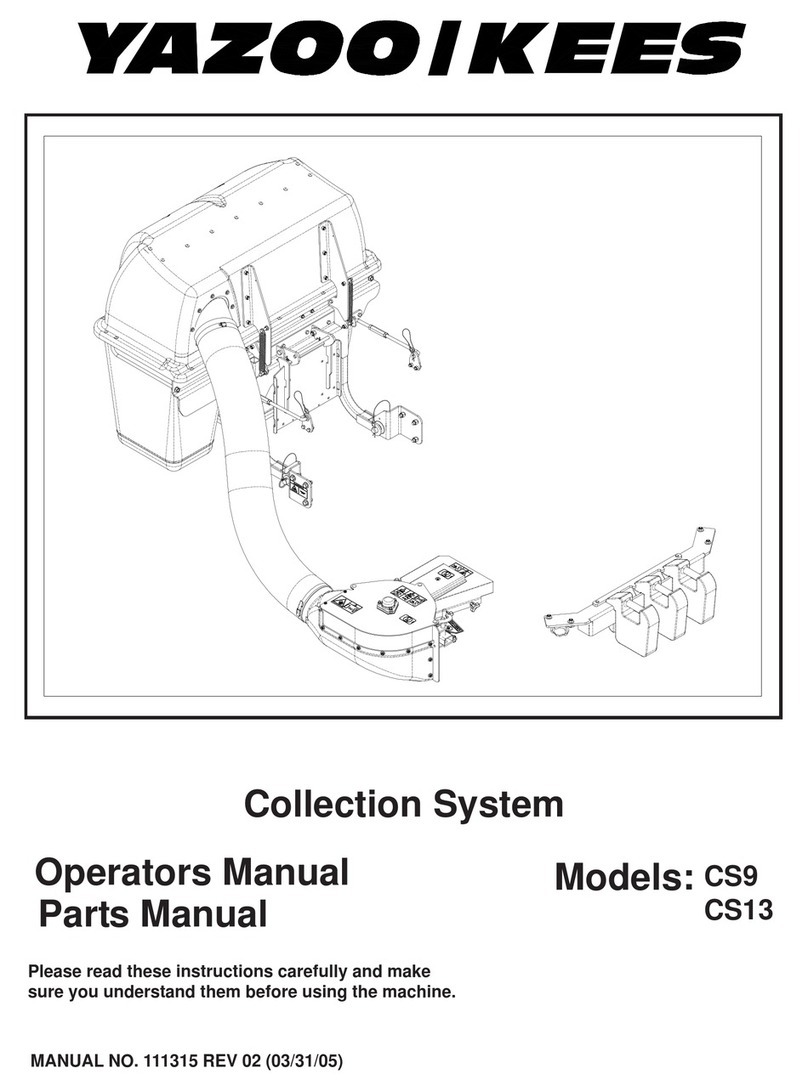
Yazoo/Kees
Yazoo/Kees Z9 Commercial Collection System Z9A Operator's & parts manual

Premier designs
Premier designs WindGarden 26829 Assembly instructions
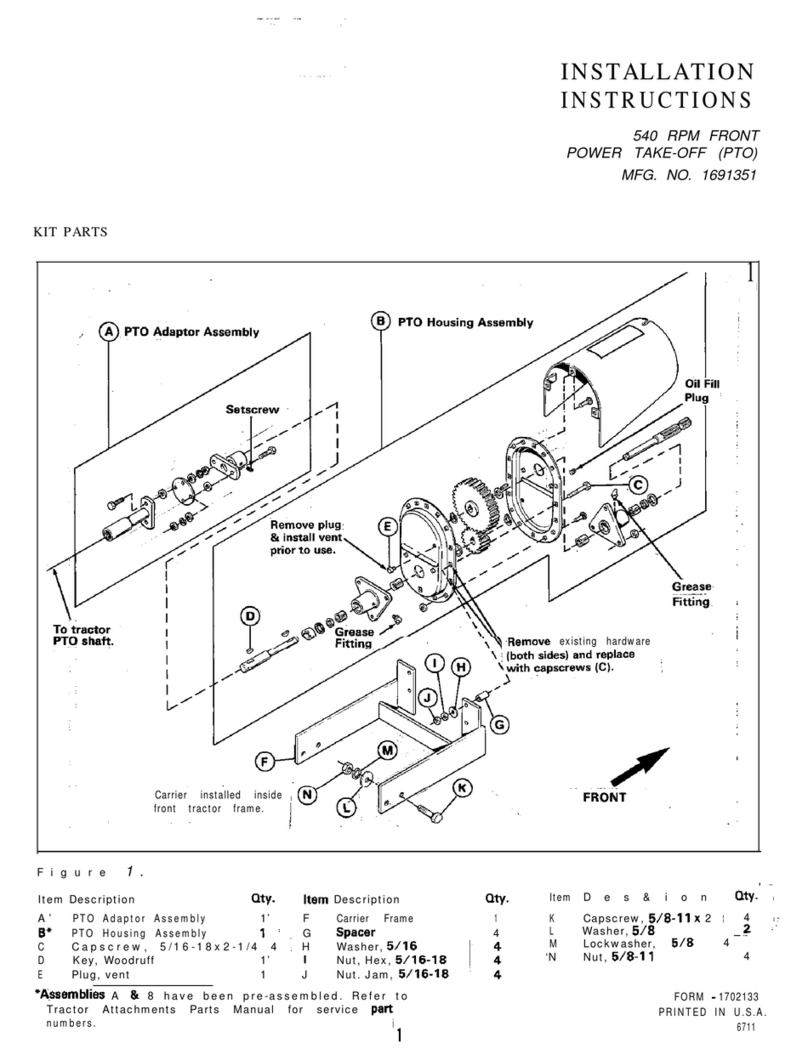
Snapper
Snapper 1691351 installation instructions
